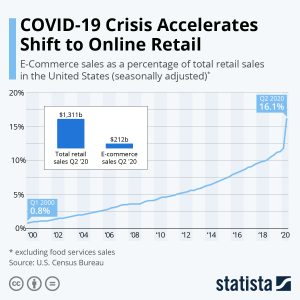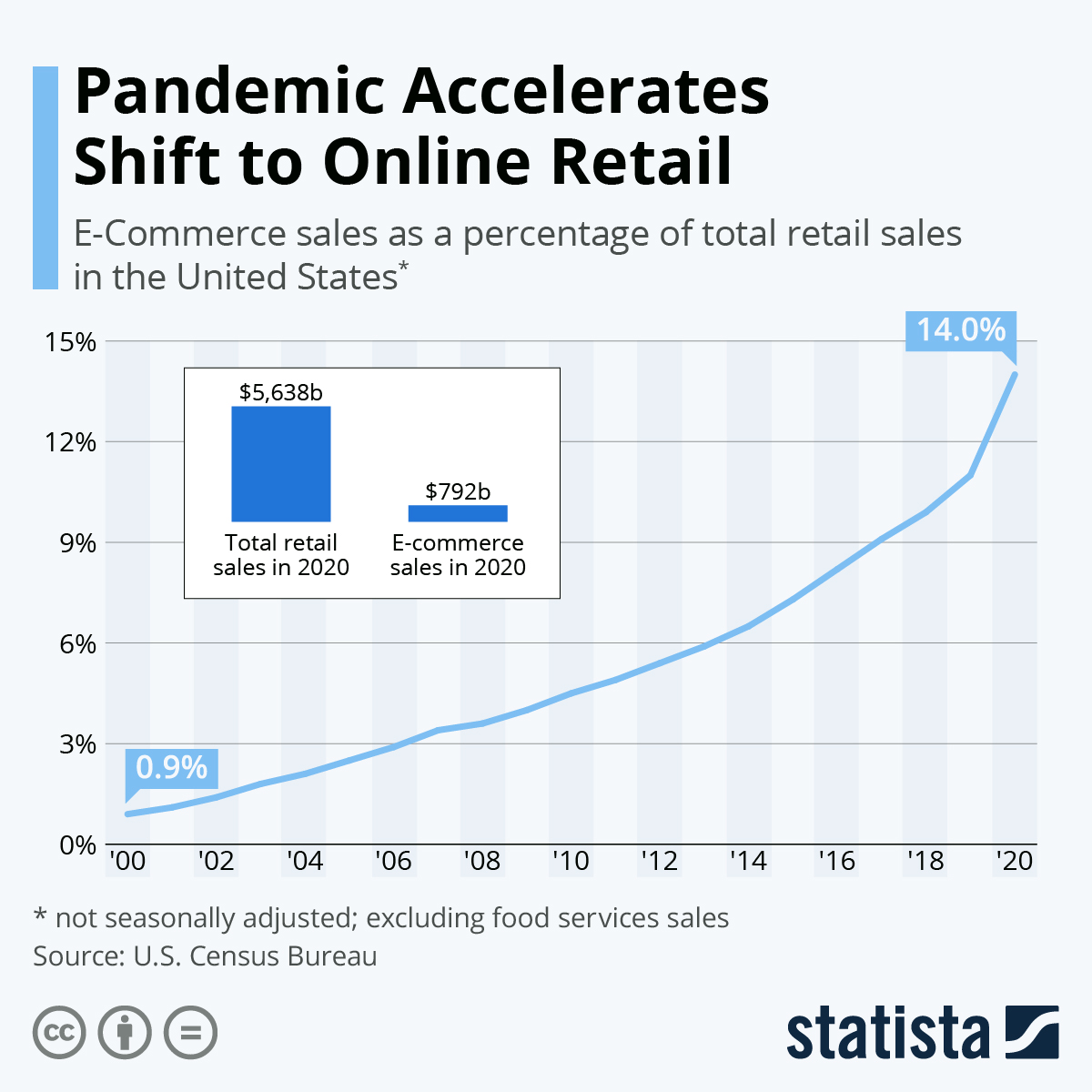
Sep 10, 2020
Submitted by Darian Muresan, CTO
Iconasys.com and DMMD.net
(703) 439-0067
darian@dmmd.net
Global Pandemic Stems Change in Shopping Patterns – A Big Shift to eCommerce
The future or retail has changed dramatically. Just a few months ago, the world was vastly different place, one where people could physically interact in social settings without a worry in the world. Que up a global pandemic and businesses who were unprepared are left fighting for survival in this new retail landscape. And while things start to settle and the world attempts to return to normal, the underlying fear remains for many consumers. The damage has been done and with it, our shopping habits have likely changed forever.
The Rise of eCommerce
The writing was on the wall. The importance of eCommerce and an online presence for brands or retailers has become ever more important. Year over year we hear about the surging growth trends shifting from physical brick and mortar storefronts to eCommerce. According to US Commerce Department, in 2019 online sales jumped 14.9% while physical store sales increased 3.8%. And since 2007, eCommerce sales has grown over 300%.
 You will find more infographics at Statista
You will find more infographics at Statista
While marketplaces such as Amazon and WalMart have really been a driving force behind the eCommerce growth, brands that employ a direct online sales approach through a wholly owned website, have also been able to capitalize. For example, in Quarter 2 of 2019, Nike was able to grow its eCommerce revenue by 38%, growing twice as fast as its wholesale business! While numbers for 2020 start to trickle out, it’s obvious the trend will continue, however with much more aggressive growth curve.
Transitioning from Brick and Mortar to eCommerce
The time to adjust your strategy is now. While many think they’ve missed the boat on the eCommerce revolution, there is still plenty of opportunity. The industry life cycle is taking a familiar path. In the typical introduction and growth phase, we see many players emerge, all vying for the top spot. Initially quite fragmented, with many marketplaces emerging in the mid to late 2000’s, Amazon and a couple other select players have solidified their position as the ‘go-to’. And while these marketplace channels remain an integral and strategic part of many brands eCommerce strategies, we are starting to see some push back – push back from brands who look to better their own direct sales approach with a more curated customer experience that matches their brand. A good example of this is Nike, who in November 2019 decided to end its direct sales of Shoes and Apparel through Amazon.com.
And while this transition for Nike might be a lot easier due to their brand awareness, notoriety and marketing budgets, smaller brands still have a lot of opportunity to employ a digital growth strategy through a Hybrid approach of wholly owned website, marketplace selling and new opportunities in social media promotion and selling. And let me point out here the importance of creating your wholly owned eCommerce site – this provides you the ability to craft your brand, tell your story, present your goods how you wish and create something that people will fall in love with. And considering the tools available that make creating your eCommerce store front simple and affordable (ex. Shopify), this should be a high priority for all online sellers.
Bridging the Gap from Virtual to Reality
A good digital sales strategy not only includes selling through the right channels and promoting products effectively and efficiently to your target market, but also adding value throughout the sales process. We must ask ourselves ‘How can we be better’ and ‘What can set up apart from our competitors’. Consider things like usability and site design in addition to product display and customer experience.
Visual Merchandising in eCommerce
“Visuals are processed in the brain at 60,000 times the speed of text”
Did you know 90% of online buyers say product photo quality is the most important factor in an online sale? Great product photography is a simple and (can be) an affordable way to capitalize and convert visitors on your site into buyers. It’s no longer enough to offer one or two images to supplement a product listing in eCommerce. Your customers want visual information – something that is easy to comprehend. This includes offering multiple product images to fully communicate the product being sold, high resolution images that users can inspect up close and even lifestyle images showing the product in a real world setting.
360 Product Photography in eCommerce
And when comparing an in-store experience, where customers can touch, feel, try-on physical goods, eCommerce lacks. There is many resources being dedicated in an attempt to fill in this gap between virtual and reality. We see new technologies emerging such as Augmented Reality (AR) where users can virtually try on apparel at home. We see the same in the eyewear industry with being able to try on eyeglasses and sunglasses virtually. While these technologies just aren’t quite where they need to be to be effective, they are getting better each day and one day they’ll work flawless. Another technology for enhancing eCommerce visual merchandising, one that has already been proven as an effective tactic to increase sales is 360 Product Photography. The process to create 360 Product Photography involves capturing a sequence of images as an object rotates. For example, capture 36 images (1 image every 10-degrees) over a 360 rotation. The 360 product image set is then composed into an interactive 360 product view that can be embedded into a website. With this file, customers can interact (click and drag mouse control (or gesture control on mobile devices), deep zoom at any angle to inspect and add additional tags to the image that can link to additional info (ex. add a hotspot that links to a video communicating how a product works).
We have seen many retailers employing 360 Product Photography into their online sales efforts, and even marketplaces such as Amazon starting to roll our 360 product photography in their product listing pages.
360 Product Video in eCommerce
In addition to 360 Product Photography, 360 Product Videos can provide the same visual information (an all encompassing 360 view) however do not provide any user interactivity (click and drag) nor zoom.
The Future of Retail: Conclusion
Now is the time to dedicate time, effort and resources to your digital strategy. If the COVID-19 pandemic taught us anything, its how fast things can change. And being prepared can make or break a business. While I do see there being many benefits to brick and mortar retail, there is absolutely no reason not to have an eCommerce presence. And not just a presence, but a good eCommerce presence that best resembles your brand and elegantly displays your products. Now’s the time to step up your digital footprint.
About Iconasys:
Iconasys is a leading provider of do it yourself product photography tools. Our product line focuses around our product photography automation software that is designed to enable users of any skill level to easily and efficiently create high quality still and 360 product photography in-house. For additional information on Iconasys, please see:
Product Photography Automation Software
360 Product Photography Software
360 Product Photography Turntables
360 Product Photography Examples
Iconasys product photography tools are trusted by over 5,000 customers including many of the worlds largest retailers, brands, agencies and professional photographers worldwide. To learn more about what Iconasys product photography tools are best for your business, feel free to contact us.
